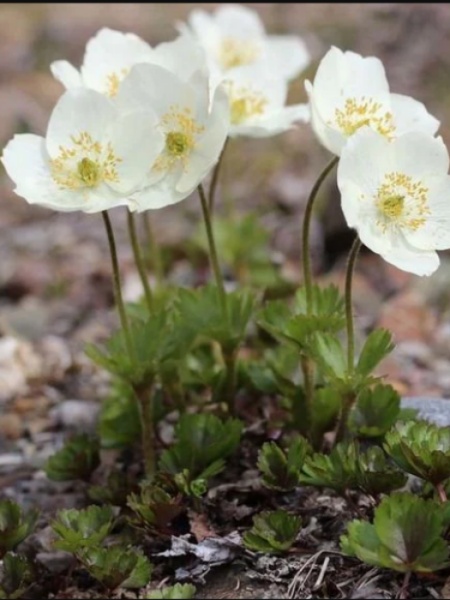 Known to be toxic - Toxic to pets and humans if ingested.
Known to be toxic - Toxic to pets and humans if ingested.

Source: Slichter 2012
Anemone parviflora
Small-flowered Anemone
Anémone à petites fleurs
Synonyms
northern anemone
anémone parviflore
No seeds available for this plant.
We currently accept seeds for this plant
Bloom Colour: White
Bloom Period: Jun - Aug
Max Height: 0.75 feet
Max Width: 0.7 feet (spreads by rhizome)
Light Condition:
 More than 6 hours of direct sun a day
Soil conditions:
More than 6 hours of direct sun a day
Soil conditions:
 Tolerates medium soil condition
Tolerates medium soil condition
 More than 6 hours of direct sun a day
More than 6 hours of direct sun a day
 Tolerates medium soil condition
Tolerates medium soil condition
Lifespan:
Perennial
plants that will that come back year after year
Gardener Experience:
 Does not spread uncontrollably
Does not spread uncontrollably
 Does not spread uncontrollably
Does not spread uncontrollably
Landscape Uses:
 Suitable for rock gardens
Suitable for rock gardens
 Suitable for container garden
Suitable for container garden
 Suitable for school gardens
Suitable for school gardens
 Suitable for rock gardens
Suitable for rock gardens
 Suitable for container garden
Suitable for container garden
 Suitable for school gardens
Suitable for school gardens
Ecological Benefits:
No ecological benefits information available.
Tolerates:
 Deer resistant
Deer resistant
 Rabbit resistant
Rabbit resistant
 Tolerates juglone conditions
Tolerates juglone conditions
 Tolerates transplantation
Tolerates transplantation
 Deer resistant
Deer resistant
 Rabbit resistant
Rabbit resistant
 Tolerates juglone conditions
Tolerates juglone conditions
 Tolerates transplantation
Tolerates transplantation
Special Features and Considerations:
 This plant causes skin rashes
This plant causes skin rashes
 This plant causes skin rashes
This plant causes skin rashes
Plant Location
Distribution according to VASCAN

Ephemeral
Native
Introduced
Excluded
Extirpated
Doubtful
Absent
Thrives in Ecozones
- Taiga Plains
- Montane Cordillera
- Taiga Cordillera
- Boreal Cordillera
Ecological Benefits
Butterflies Supported by Anemone parviflora
No butterfly data available for this plant.
Specialized Bees Supported by Anemone parviflora
No bee data available for this plant.
Plants that grow in similar conditions, that bloom at the same time.
Complementary Plants
- Erythronium albidum
White Trout Lily
Érythrone blanchâtre - Gaultheria procumbens
Eastern Teaberry
Thé des bois - Trillium erectum
Red Trillium
Trille rouge - Trillium grandiflorum
White Trillium
Trille blanc - Viola sororia
Woolly Blue Violet
Violette parente
Substitute For Non-Native Plants
- Convallaria majalis (Lily of the Valley)
- Lysimachia nummularia (Creeping Jenny)
- Iridaceae (Crocus)
- Scilla siberica (Siberian Squill)
- Tulipa (Tulips)
Sowing Information
Download Seed Envelope Labels (PDF)
- Sowing depth: Surface sow
- Sow anytime
- Stratification duration: 0 days
Harvesting and Seed Sharing
- Harvest start month: August
- Harvesting indicator:
- Seeds have become fluffy and can be easily removed by shaking on gently pulling off from stem
- Harvesting:
- Use hand to detach from main stem
- Seed viability test:
- No test needed before donating
- Packaging measure: 1 rounded 1/4 teaspoon
- Seed storage:
- Air dry in paper bag or open container, for a few days until crisp
- Shake seeds to move them once in a while to prevent molding
- Cultivar: No, you can donate without knowing the source as there are only straight species
- No harvesting video available at this time.
Toxicity Notes
Toxic to pets and humans if ingested.


 Canadensis
Canadensis
